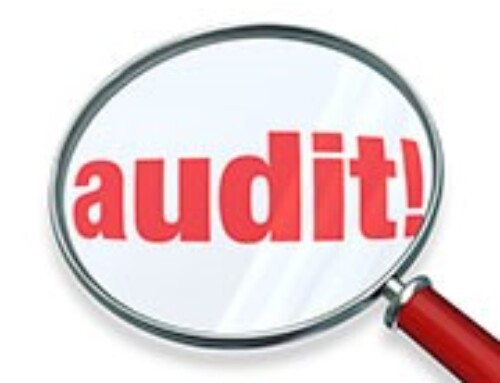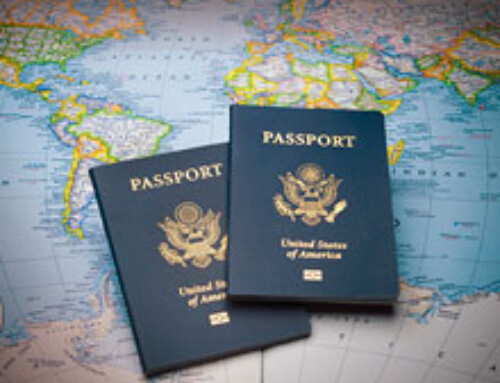You’ve probably heard about the massive new Consolidated Appropriations Act (CAA), which provides direct payments to eligible individuals and contains other provisions to help mitigate the effects of COVID-19. But it also provides several tax-relief measures related to qualified disasters. Here’s a summary of the key provisions.
Deduction Rules for Personal Qualified Disaster Casualty Losses
For 2018 through 2025, the Tax Cuts and Jobs Act (TCJA) generally suspends federal income tax itemized deductions for personal casualty losses, except for losses due to federally declared disasters.
If, after considering any insurance proceeds, you have a personal casualty loss due to a federally declared disaster, you must first reduce it by $100. Then you must further reduce it by 10% of your adjusted gross income (AGI). You can write off the remaining loss, if any, if you itemize deductions on your tax return.
Under a special rule, you can choose to treat a personal casualty loss due to a federally declared disaster as if it occurred before it actually occurred, if that gives you a better tax-saving result.
The CAA grants additional limited tax relief to an individual who has a net disaster loss for the tax year in question. For purposes of this relief, a net disaster loss equals the excess of your qualified disaster-related personal casualty losses for the year over your personal casualty gains, if any. (You can have a personal casualty gain if insurance proceeds exceed the tax basis of damaged or destroyed property.)
A qualified disaster-related personal casualty loss is defined as one that arises in a qualified disaster area on or after the first day of the incident period of the qualified disaster and that is attributable to the qualified disaster.
The CAA increases the first subtraction for a qualified disaster-related personal casualty loss from $100 to $500. However, the 10%-of-AGI subtraction doesn’t apply. In addition, the CAA treats the allowable net disaster loss as an addition to your standard deduction. So, you can write off the loss even if you don’t itemize. Finally, the net disaster loss write-off is fully allowed for alternative minimum tax (AMT) purposes.
Important: This relief provision is available for a limited time only. It only applies to net disaster losses in a qualified disaster area for which a major disaster is declared by the President between December 1, 2020, and February 26, 2021 (60 days after the date of enactment of the CAA), as long as the incident period for the disaster began after December 27, 2019, and before December 28, 2020. Finally, any area for which a major disaster was declared only by reason of COVID-19 doesn’t count as a qualified disaster area for purposes of this CAA relief provision.
Treatment of Qualified Disaster Distributions from IRAs and Retirement Plans
In general, if you receive a taxable distribution from an IRA or eligible tax-favored retirement plan before age 59½, you’ll be hit with a 10% early withdrawal penalty tax unless an exception applies. However, the CAA exempts qualified disaster distributions from the 10% penalty tax.
A qualified disaster distribution (QDD) is defined as any distribution from an IRA or eligible retirement plan (as defined by the CAA) that’s made:
- On or after the first day of the incident period of a qualified disaster and before June 26, 2021 (180 days after the enactment date of the CAA), and
- To an individual whose principal place of abode at any time during the incident period is within the qualified disaster area who sustains an economic loss due to the disaster.
For any year, the total amount of distributions that an individual can treat as QDDs is limited to $100,000 reduced by any amounts treated as QDDs in prior years. The taxable amount of any QDD can be spread over a three-year period starting with the year of receipt, unless the recipient chooses to include the entire amount in income in the year of receipt.
Alternatively, you can recontribute a QDD to an IRA or eligible retirement plan within the three-year window that begins on the date you receive the QDD. You can then treat the QDD and the related recontribution as a federal-income-tax-free rollover transaction. Recontributions can be made in a lump sum or as multiple recontributions.
When all is said and done, recontributed QDDs are free from federal income tax. But if you don’t recontribute a QDD quickly enough, you may have to pay an interim tax hit and then file an amended return to get the interim tax hit refunded. Ask your tax advisor for help to avoid this pitfall.
Important: There are no restrictions on how you can use QDDs. If you’re cash-strapped, you can use the money to pay bills and recontribute later (within the three-year window) when your financial situation improves. Or you can use the money for purposes such as helping your adult kids now and you can recontribute later.
Distributions Used for Eligible Home Purchases
The CAA also allows an individual who receives a qualified distribution from an IRA or eligible retirement plan to recontribute, during the applicable period, the distribution to an IRA or eligible retirement plan and thereby achieve tax-free rollover treatment. For purposes of this rule, a qualified distribution is a distribution that’s:
- Used to purchase or construct a principal residence in a qualified disaster area, and
- Received during the period beginning 180 days before the first day of the incident period of the qualified disaster and ending 30 days after the last day of the incident period.
The applicable period for making a recontribution is the period beginning on the first day of the incident period of the qualified disaster and ending on June 26, 2021 (180 days after the enactment date of the CAA).
Important: This provision effectively allows an eligible individual to temporarily use money withdrawn from an IRA or eligible retirement plan to buy or build a principal residence. Then he or she can choose to recontribute the withdrawn amount as a tax-free rollover after other funding sources have been found.
Limit for Retirement Plan Loans Made after Disasters
In general, the cumulative amount of loans from a tax-favored retirement plan to a plan participant (borrower) cannot exceed the lesser of $50,000 or 50% of the borrower’s vested account balance.
The CAA stipulates that for a plan loan made to a qualified individual between December 27, 2020, and June 26, 2021 (the 180-day period beginning on the enactment date of the CAA), the loan limit is increased to the lesser of:
- $100,000, or
- 100% of the borrower’s vested account balance.
A qualified individual is someone:
- Whose principal place of abode at any time during the incident period of a qualified disaster is located in the qualified disaster area, and
- Who sustains an economic loss due to the disaster.
Qualified individuals are also eligible for relaxed plan loan repayment terms.
Employee Retention Tax Credit for Employers Affected by Qualified Disasters
The CAA includes a new federal employee retention tax credit for wages paid by an eligible employer in an area that’s declared a federal qualified disaster zone between December 1, 2020, and February 26, 2021 (60 days after the enactment date of the CAA).
For purposes of this credit, qualified disaster zones don’t include areas covered by COVID-19-related disaster declarations. The qualified disaster employee retention credit equals 40% of the first $6,000 of an employee’s qualified wages, for a maximum per-employee credit of $2,400. Qualified wages for this credit don’t include any wages taken into account for purposes of claiming the COVID-19 employee retention credit.
An eligible employer is one that:
- Conducted an active business in a qualified disaster zone at any time during the incident period of the qualified disaster, and
- Became inoperable at any time during the period beginning on the first day of the incident period and ending on December 27, 2020 (the enactment date of the CAA), as a result of damage sustained due to the qualified disaster.
Consult your tax advisor for full details on this credit.
Corporate Charitable Deductions for Qualified Disaster Relief Contributions
In general, a C corporation’s charitable contribution deduction can’t exceed 10% of taxable income, calculated before the deduction and with certain modifications. Excess contributions that can’t be currently deducted can be carried forward for up to five years and potentially deducted in those years, subject to the 10%-of-taxable-income limit.
The CAA defines a new category of corporate charitable contributions: qualified disaster relief contributions. Deductions for these contributions can offset up to 100% of the contributing corporation’s taxable income.
A qualified disaster relief contribution is defined as any qualified contribution that’s:
- Paid between January 1, 2020, and February 26, 2021 (60 days after the enactment date of the CAA), and
- Made for relief efforts in a qualified disaster area.
The corporation must obtain a contemporaneous written acknowledgment from the recipient organization stating that the contribution was used or will be used for such disaster relief efforts. The corporation must also make an election to have this favorable CAA provision apply.
Important: The CARES Act, which was enacted in March of 2020, permits corporations to offset up to 25% of taxable income with qualified contributions, as defined by that law, that were made in 2020. The CAA includes a confusing provision that attempts to coordinate the CARES Act rules for qualified contributions made in 2020 with the new CAA rules for qualified disaster relief contributions. Stay tuned for IRS guidance on this issue.
For More Information
The federal income tax disaster relief provisions of the CAA are complicated, and the IRS is expected to issue additional guidance to clarify some of these provisions. Consult with us and we will answer any questions you have about the disaster-relief provisions of the massive new law.






